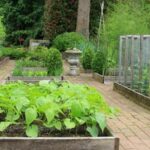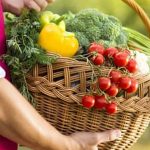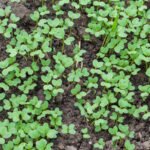When it comes to indoor vegetable gardening, choosing the best fertilizer is key to ensuring healthy and thriving plants. The right fertilizer can provide essential nutrients for growth, blooming, and fruiting, promoting a successful harvest.
For indoor vegetable gardening enthusiasts, finding the best fertilizer for their plants is crucial in achieving optimal results. In this guide, we will explore the importance of using the best fertilizer in indoor vegetable gardening and provide insights into selecting the ideal options for your indoor garden.
Indoor vegetable gardening presents unique challenges compared to traditional outdoor gardening, as plants rely solely on the nutrients provided through fertilizers. By understanding the nutrient requirements of indoor vegetable plants and selecting the right fertilizer, gardeners can nurture their plants to reach their full potential. Whether you are growing tomatoes, peppers, herbs, or other vegetables indoors, choosing the best fertilizer is essential for promoting healthy growth and maximizing yield.
In this comprehensive guide, we will delve into different types of fertilizers available for indoor vegetable gardening, including organic and synthetic options. We will discuss the benefits and drawbacks of each type to help you make an informed decision based on your preferences and gardening goals.
Additionally, we will provide tips on how to effectively apply fertilizers to indoor vegetable plants and recommend specific fertilizers for popular vegetables like tomatoes, peppers, and herbs. Stay tuned as we explore everything you need to know about selecting the best fertilizer for your indoor vegetable garden.
Types of Fertilizers
When it comes to indoor vegetable gardening, choosing the right type of fertilizer is crucial for the healthy growth and high yield of your plants. There are several types of fertilizers available in the market, each with its unique composition and benefits. The best fertilizer for indoor vegetable gardening is one that provides the necessary nutrients for optimal plant growth without causing any harm to the environment or your health.
Organic fertilizers are derived from natural sources such as compost, manure, or bone meal. They are rich in essential nutrients and improve soil structure over time. One of the advantages of organic fertilizers is that they release nutrients slowly, providing a steady supply to the plants.
On the other hand, synthetic fertilizers are chemically formulated to deliver a quick nutrient boost to plants. While synthetic fertilizers may show immediate results, they can also deplete soil health in the long run if overused.
Balanced fertilizers contain a mix of nitrogen, phosphorus, and potassium (NPK) in varying ratios to meet the specific needs of different plants at different growth stages. For indoor vegetable gardening, look for a balanced fertilizer with equal parts of NPK or a ratio close to 10-10-10. It’s important to read and follow the instructions on the fertilizer package carefully to prevent over or under-fertilization which can lead to nutrient deficiencies or toxicity in your plants.
| Types | Advantages | Disadvantages |
|---|---|---|
| Organic Fertilizers | Natural source of nutrients; improves soil structure. | Release nutrients slowly; may take longer for results. |
| Synthetic Fertilizers | Quick nutrient boost; immediate results. | Potential harm to soil health if overused; chemical-based. |
| Balanced Fertilizers | Catered nutrient supply for different growth stages;, Risk of over/under-fertilization if not used correctly., |
By understanding the different types of fertilizers available for indoor vegetable gardening and their respective pros and cons, you can make an informed decision on which one suits your needs best. Consider factors such as plant type, growth stage, and personal preference when selecting a fertilizer for your indoor garden.
Remember that moderation is key – always start with a small amount of fertilizer and gradually increase based on plant response to avoid any issues. With the right fertilizer regimen in place, you’ll be on your way to a thriving indoor vegetable garden in no time.
Organic vs Synthetic Fertilizers
When it comes to choosing the best fertilizer for indoor vegetable gardening, one of the key decisions that gardeners need to make is whether to use organic or synthetic fertilizers. Both types have their own set of benefits and drawbacks, which can influence the overall health and productivity of your indoor vegetable plants.
Organic fertilizers are derived from natural sources such as compost, manure, or bone meal. These fertilizers are rich in essential nutrients and promote soil health by improving its structure and fertility. Additionally, organic fertilizers release nutrients slowly over time, providing a consistent source of nutrition for your indoor vegetable plants. Some popular organic options include fish emulsion, seaweed extract, and compost tea.
On the other hand, synthetic fertilizers are chemically formulated to provide specific concentrations of nutrients needed for plant growth. These fertilizers often deliver nutrients quickly, making them an efficient choice for addressing nutrient deficiencies in indoor vegetable plants. However, synthetic fertilizers can lead to nutrient imbalances if not used correctly and may harm beneficial soil organisms in the long run. Common examples of synthetic fertilizers include ammonium nitrate, superphosphate, and potassium sulfate.
In deciding between organic and synthetic fertilizers for indoor vegetable gardening, it is essential to consider factors such as plant sustainability goals, environmental impact, cost-effectiveness, and ease of application. Some gardeners choose to use a combination of both types to reap the benefits of each while minimizing their respective drawbacks. Experimenting with different fertilizers and observing how your indoor vegetable plants respond can help you determine the most suitable option for your gardening needs.
Nutrient Requirements
When it comes to indoor vegetable gardening, providing the right nutrients for your plants is crucial for their healthy growth and productivity. Understanding the essential nutrients needed by your indoor vegetables can help you choose the best fertilizer for them. Here are some of the key nutrients that are important for the development of indoor vegetable plants:
- Nitrogen: Nitrogen is essential for promoting leafy growth in plants and is crucial for overall plant health. Look for fertilizers with a higher nitrogen content to support the vigorous growth of your indoor vegetable plants.
- Phosphorus: Phosphorus plays a vital role in root development, flowering, and fruiting in plants. Fertilizers rich in phosphorus are especially important during the flowering and fruiting stages of your indoor vegetables.
- Potassium: Potassium helps improve overall plant health, disease resistance, and enhances fruit quality. It is important to provide adequate potassium to your indoor vegetable plants through fertilization.
In addition to these primary macronutrients, indoor vegetable plants also require micronutrients such as calcium, magnesium, sulfur, iron, zinc, copper, manganese, molybdenum, and boron for their healthy growth. These micronutrients play key roles in various metabolic processes within the plant and deficiencies in any of these nutrients can lead to stunted growth, poor fruit development, or susceptibility to diseases.
When choosing a fertilizer for your indoor vegetable garden, look for products that provide a balanced mix of these essential nutrients to meet the specific needs of your plants. Consider conducting a soil test to determine any deficiencies that need to be addressed with fertilization. By understanding and fulfilling the nutrient requirements of your indoor vegetable plants, you can promote strong growth, abundant flowering, and bountiful harvests throughout the growing season.
Application Methods
Indoor vegetable gardening requires careful attention to detail, especially when it comes to providing the right nutrients for your plants. Choosing the best fertilizer for indoor vegetable gardening is crucial in ensuring healthy growth and bountiful harvests. When it comes to applying fertilizer to your indoor vegetable plants, there are several effective methods that you can use.
One common method of applying fertilizer to indoor vegetable plants is top dressing. This involves simply sprinkling the fertilizer on the soil surface around the base of the plant. Top dressing is a quick and easy way to provide nutrients directly to the roots of the plant. It is important to avoid direct contact between the fertilizer and the plant’s foliage as this can cause burning.
Another effective method of fertilizing indoor vegetable plants is by foliar feeding. This involves spraying a diluted fertilizer solution directly onto the leaves of the plants. Foliar feeding can be a quick way to address nutrient deficiencies and provide an immediate boost to your plants. However, it should be done in moderation and not as a sole method of fertilization, as indoor plants primarily absorb nutrients through their roots.
Using a watering can with a built-in fertilizing attachment is also a popular method of applying fertilizer to indoor vegetable plants. This allows for even distribution of the fertilizer solution while watering your plants at the same time. It is important to follow the instructions on the fertilizer package regarding dilution rates and frequency of application to prevent over-fertilization, which can be harmful to your plants.
| Method | Description |
|---|---|
| Top Dressing | Sprinkling fertilizer on soil surface around plant base |
| Foliar Feeding | Spraying diluted fertilizer solution on plant leaves |
| Watering Can Attachment | Using watering can with built-in fertilizing attachment for even distribution |
Best Fertilizers for Specific Vegetables
When it comes to indoor vegetable gardening, choosing the right fertilizer is crucial for the health and growth of your plants. Different vegetables have varying nutrient requirements, so it’s essential to select the best fertilizer for specific types of vegetables like tomatoes, peppers, and herbs.
Tomatoes
Tomatoes are a popular choice for indoor gardening due to their versatility and delicious flavor. To ensure optimal growth and fruit production, consider using a balanced fertilizer with higher levels of phosphorus and potassium. Look for fertilizers specifically formulated for tomatoes, which often contain additional calcium to prevent blossom end rot.
Peppers
Peppers thrive in well-draining soil rich in organic matter. Choose a fertilizer with a higher potassium content to promote flower and fruit development. Look for fertilizers labeled for vegetables or peppers, which typically contain micronutrients like magnesium and sulfur essential for healthy pepper plants.
Herbs
Herbs are easy to grow indoors and can benefit from a balanced fertilizer with equal parts nitrogen, phosphorus, and potassium. Avoid over-fertilizing herbs as it can affect their flavor. Consider using an organic fertilizer made from natural ingredients to support the growth of aromatic herbs like basil, mint, and parsley.
By selecting the best fertilizer for specific vegetables like tomatoes, peppers, and herbs, you can provide your indoor garden with the nutrients needed for robust growth and bountiful harvests. Remember to follow the recommended guidelines on the fertilizer package and adjust accordingly based on your plant’s response. With proper care and attention to their nutritional needs, your indoor vegetable plants will thrive and provide you with fresh produce year-round.
Fertilizing Schedule
Understanding the Importance of a Fertilizing Schedule
In indoor vegetable gardening, creating a proper fertilizing schedule is crucial for maximizing the growth and yield of your plants. A consistent and balanced application of the best fertilizer for indoor vegetable gardening will provide your plants with essential nutrients they need to thrive. Without a reliable schedule, your plants may suffer from nutrient deficiencies or excess, leading to stunted growth or poor fruit development.
Determining Frequency and Timing
The frequency and timing of fertilizing indoor vegetable plants depend on various factors such as plant type, growth stage, soil quality, and environmental conditions. Generally, it is recommended to fertilize young seedlings once every 2-3 weeks with a diluted solution to avoid burning delicate roots. As the plants grow and mature, you can gradually increase the frequency to once every 7-10 days during their active growing season.
Adjusting Based on Plant Needs
Monitoring the health and growth of your indoor vegetable plants is key to adjusting your fertilizing schedule accordingly. If you notice signs of nutrient deficiencies like yellowing leaves or slow growth, it may be necessary to increase the frequency or concentration of fertilizer application. On the other hand, if you observe signs of over-fertilization such as burned leaf tips or excessive foliage growth at the expense of fruit production, scale back on your fertilizing regimen.
By establishing a consistent and well-planned fertilizing schedule for your indoor vegetable plants using the best fertilizer for indoor vegetable gardening, you can ensure that they receive adequate nutrition for optimal growth and productivity. Remember to closely monitor your plants’ progress and make adjustments as needed to achieve bountiful harvests year-round.
Tips for Success
When it comes to indoor vegetable gardening, using the best fertilizer is crucial for ensuring successful results. In addition to choosing the right type of fertilizer for your plants, there are a few tips and tricks that can help you maximize the effectiveness of your fertilizing efforts.
One important tip is to avoid over-fertilizing your indoor vegetable plants, as this can lead to nutrient imbalances and may even harm your plants. Be sure to follow the recommended dosage instructions on the fertilizer packaging and adjust as needed based on the specific needs of your plants.
Another key tip for success is to monitor your plants regularly to assess their nutrient levels and overall health. This can be done by observing plant growth, color, and any signs of nutrient deficiencies or excesses.
By staying observant and proactive in addressing any issues that arise, you can ensure that your indoor vegetable plants are getting the nutrients they need to thrive. Additionally, it’s important to water your plants properly in conjunction with fertilizing, as both water and nutrients are essential for healthy plant growth.
Incorporating organic matter into your soil mix can also help provide additional nutrients for your indoor vegetable plants. Compost, worm castings, or other organic amendments can improve soil structure and fertility over time, leading to healthier and more productive plants.
Lastly, consider using a balanced fertilizer with a variety of macro – and micronutrients to support overall plant health. By following these tips for success and utilizing the best fertilizer for indoor vegetable gardening, you can enjoy a bountiful harvest of fresh vegetables all year round.
Conclusion
In conclusion, choosing the best fertilizer for indoor vegetable gardening is crucial for ensuring the healthy growth and bountiful yield of your plants. By understanding the importance of providing the right nutrients to your indoor vegetables, you can optimize their growth potential and overall health. Whether you opt for organic or synthetic fertilizers, it is essential to consider the specific nutrient requirements of your plants to make an informed decision.
Furthermore, following a regular fertilizing schedule and applying the fertilizer using appropriate methods will help maximize the benefits of using the best fertilizer for indoor vegetable gardening. Remember that different vegetables may have varying nutrient needs, so it is important to tailor your fertilizer choices accordingly. For example, tomatoes may benefit from a balanced fertilizer high in phosphorus for fruit production, while leafy greens may require nitrogen-rich fertilizers for lush foliage.
In essence, employing the right fertilizer for your indoor vegetable plants not only supports their growth but also contributes to their overall health and resilience against pests and diseases. By following the guidelines provided in this article and implementing the recommended tips for success, you can enjoy a successful indoor vegetable garden that yields flavorful produce all year round. So invest in quality fertilizers suitable for your specific vegetables and watch as your indoor garden thrives with vibrancy and vitality.
Frequently Asked Questions
How Do You Fertilize Indoor Vegetables?
Fertilizing indoor vegetables is essential to ensure they receive the necessary nutrients for healthy growth. You can use a balanced liquid fertilizer diluted to half strength, applied every 2-4 weeks during the growing season. It’s important not to over-fertilize as it can harm the plants.
What Is the Best Fertilizer for Potted Vegetable Plants?
The best fertilizer for potted vegetable plants is usually a balanced, water-soluble fertilizer with equal parts nitrogen, phosphorus, and potassium (such as 10-10-10). This provides essential nutrients for growth and development. Organic options like compost tea or fish emulsion are also great choices.
How Often Should You Fertilize Indoor Vegetable Plants?
Indoor vegetable plants should be fertilized every 2-4 weeks during the growing season, which typically lasts from spring to early fall. During winter when growth slows down, you can reduce fertilization frequency or skip it altogether until the plants resume active growth. Be sure to follow the instructions on the fertilizer packaging for proper application.

If you’re looking to get into vegetable gardening, or are just looking for some tips on how to make your current garden better, then you’ve come to the right place! My name is Ethel and I have been gardening for years. In this blog, I’m going to share with you some of my best tips on how to create a successful vegetable garden.





